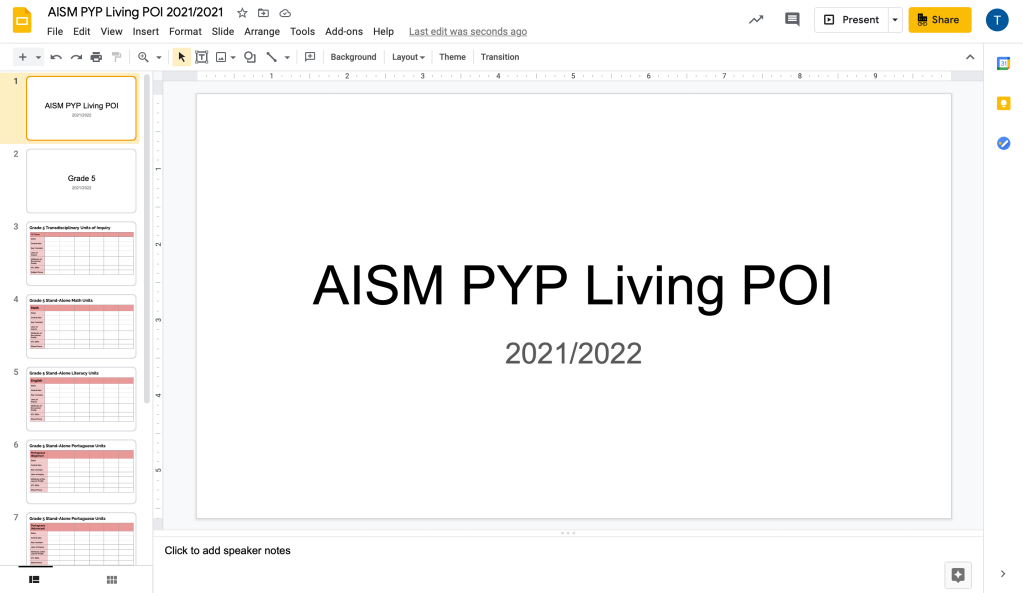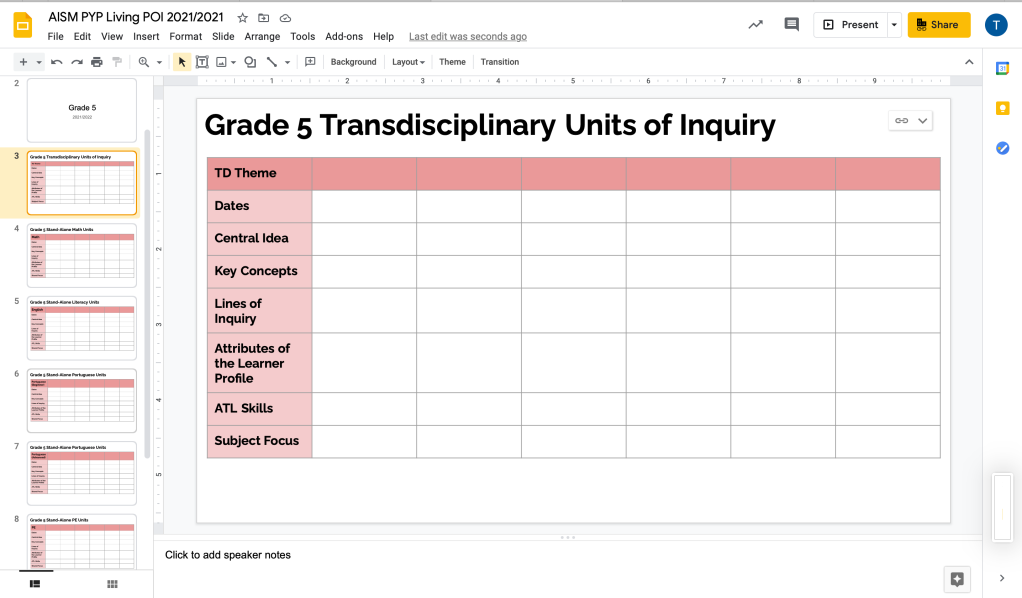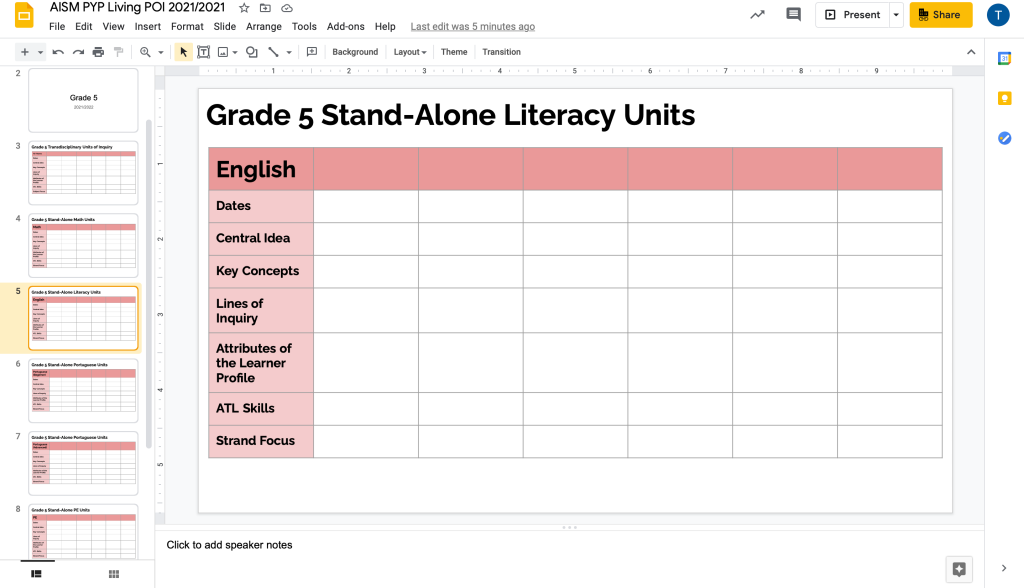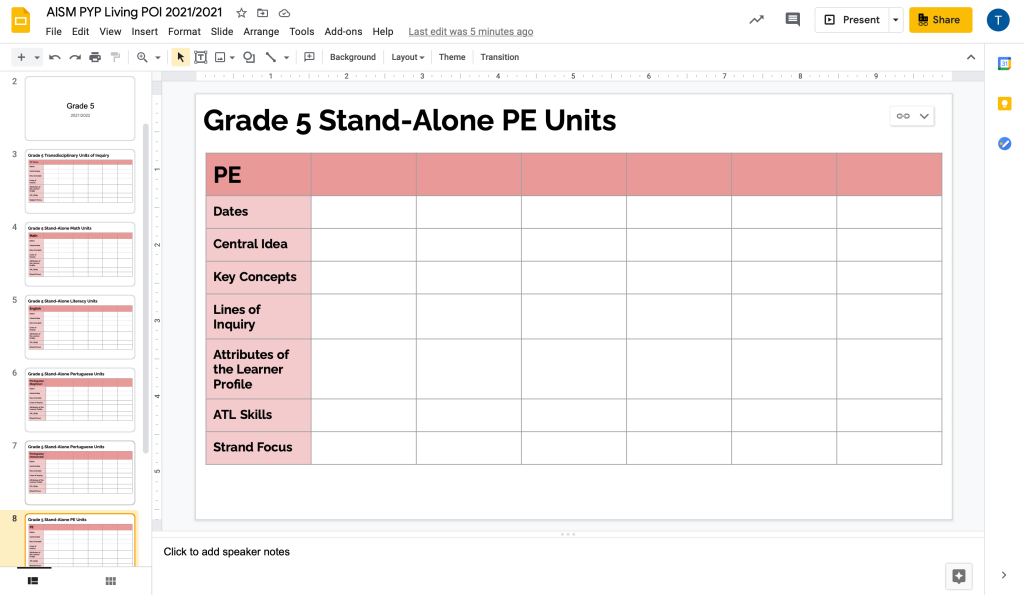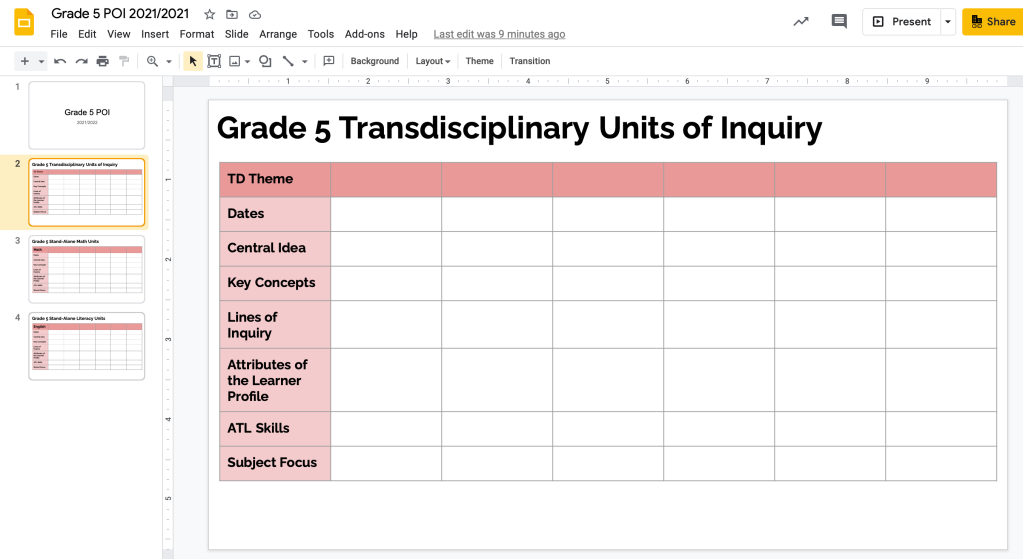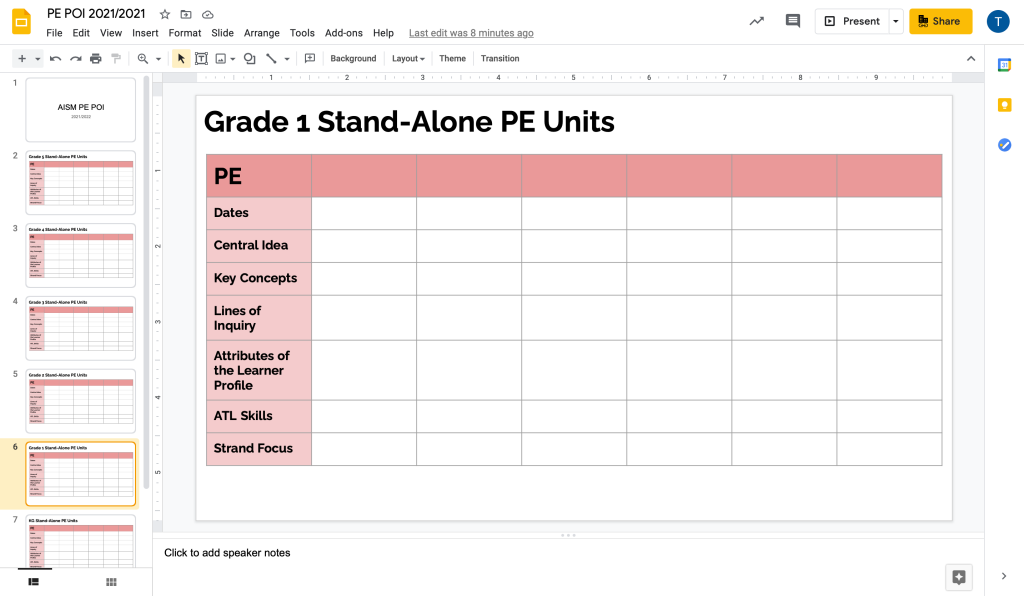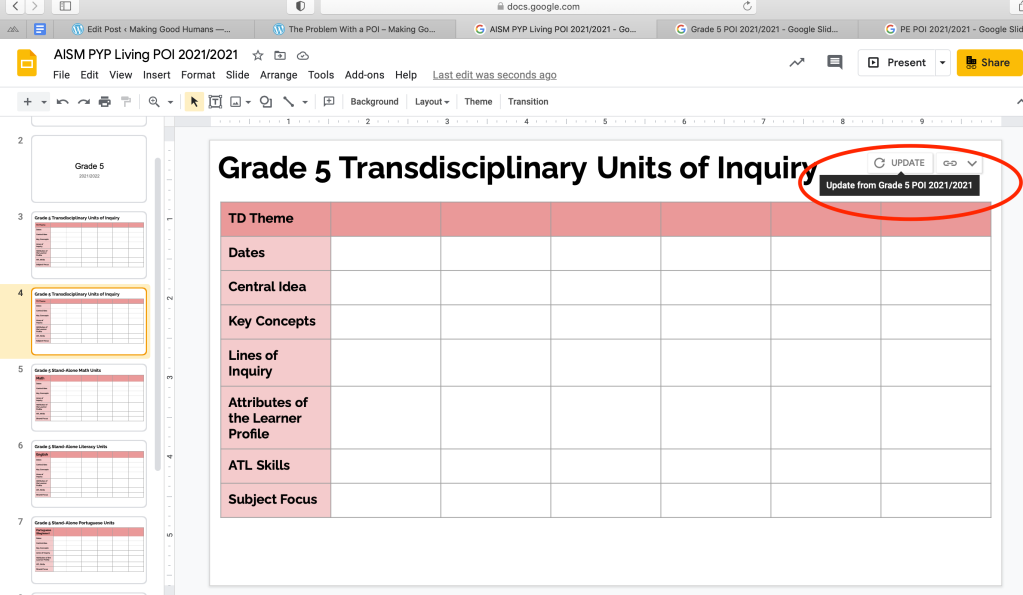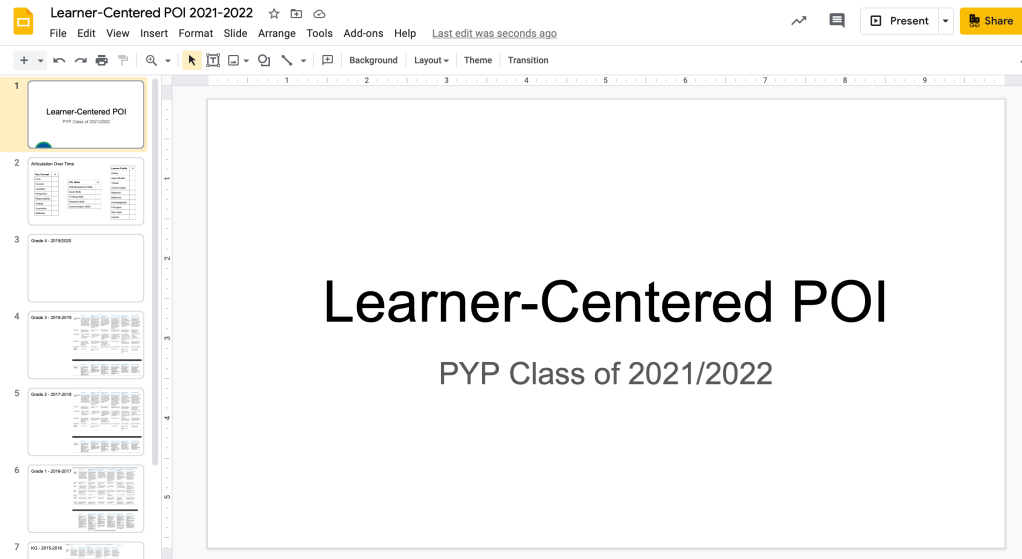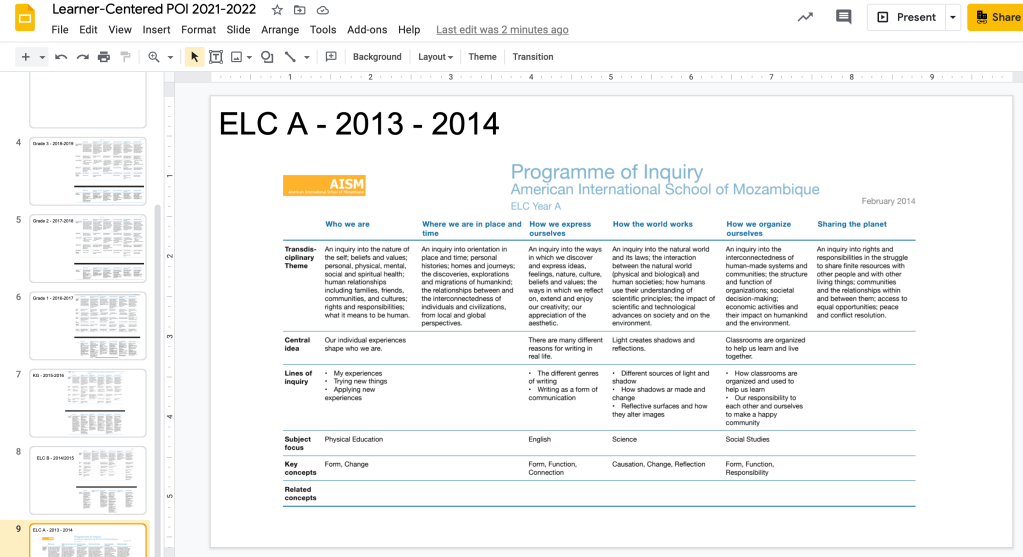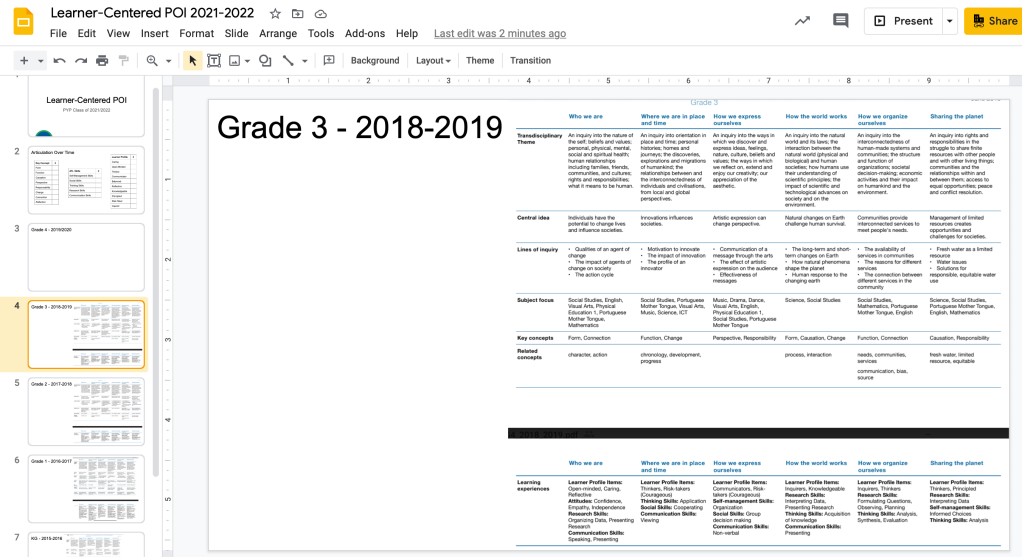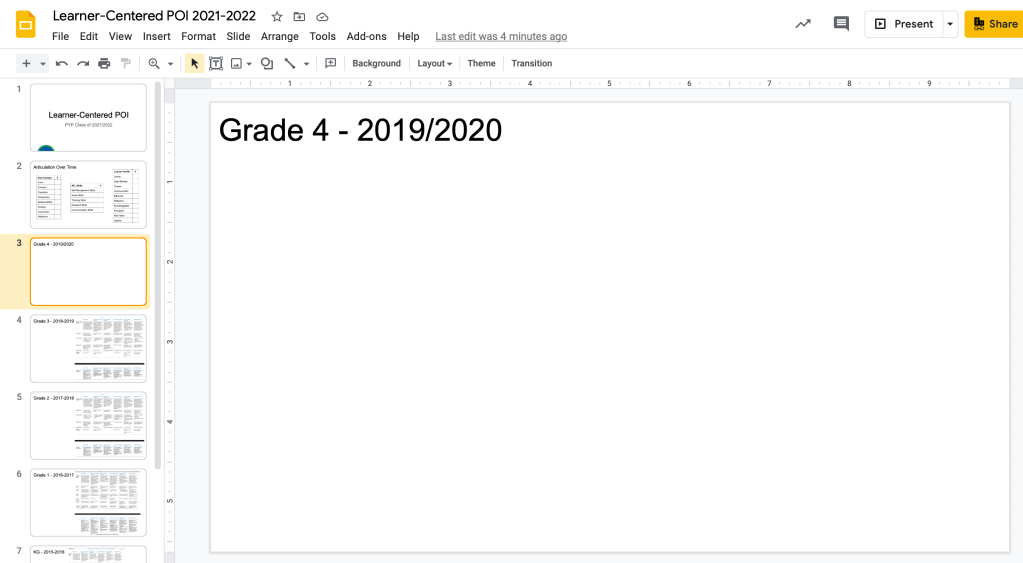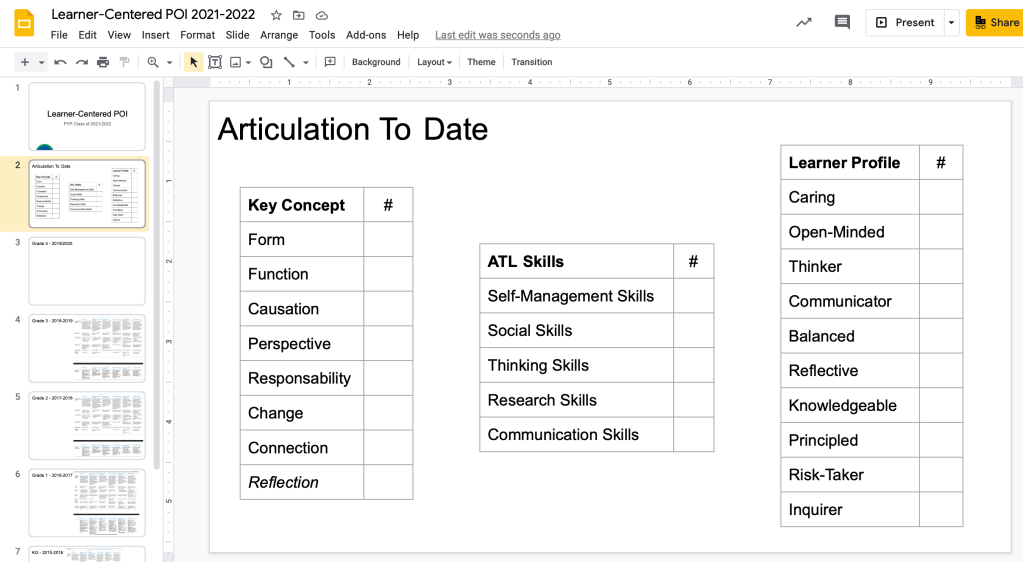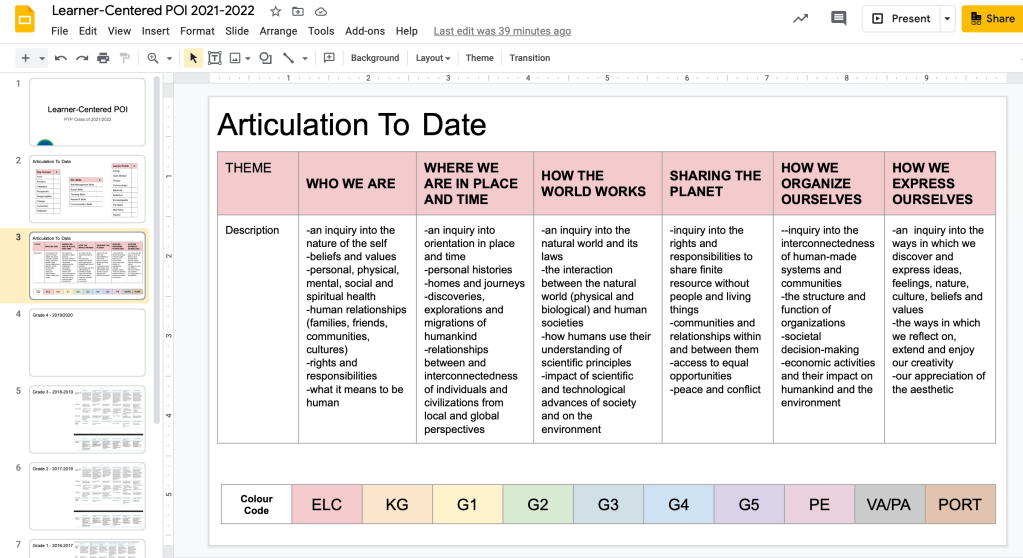This is not my first time sharing my two cents about the PYP POI.
At the time I wrote that post, I was teaching grade 5 so although I could reimagine our approach to our grade-level POI, thinking bigger – whole school – wasn’t really in my purview at the time.
But now that I am in the role of PYP Coordinator, these wonderings have begun to swirl around in my mind once more.
There are two potential ideas I have been chewing on lately that I am considering taking a risk and giving a try for next year. They are by no means fully cooked ideas yet; merely seedlings that I’ve been incubating for a while. Not only does getting them down in writing help me clarify and develop my own thinking, but getting potential feedback from my fellow PYP peeps around the world could be just what I need to get a few steps closer to being ready to launch!
So here’s what I’m thinking…
Living POI
One of the issues we have been bumping up against is trying to balance a more emergent, organic, learner-centered approach to unit planning with having some sort of central POI that is transparent, visible and accessible to the whole community. The traditional approach to POI planning – more or less – is to do it in advance, ‘lock it in’ or ‘freeze it’, throw it on the website, print it out, frame it, hang it on the wall… and then more or less follow it for the course of the year.
That approach is difficult for us, because our first two questions we ask ourselves anytime we are planning a new unit are:
- What are we noticing about our learners? (interests, strengths, curiosities, needs, misconceptions etc)
- What is going on in the world? (locally, globally, virally, seasonally etc.)
Then we consult our learning outcomes… and well, you know the rest!
Starting the unit planning process with these two questions have helped us get a little closer to building significant, relevant, engaging and challenging units that reflect that specific group of learners at that specific point in time. But has made it tricky to document the POI in the same neat and tidy way!
So I’ve been thinking about how we might adopt an approach for a “living POI”. One that can be organically, emergently, responsively built – unit by unit.
With the magic of Google Slides, I think I might have a way to do that!
I’d build a central Google Slide as the comprehensive, whole-school, PYP POI.
This would display the “big bones” of each unit for each grade-level – as it is built – whether transdisciplinary or stand alone.
Even though this will be the centralized place where everything is displayed, it wouldn’t be the place where everything is updated. To make it easier for teams, I would build each grade-level and subject team their own Google Slide deck for the units they are responsible for.
Each of these individual slides from every grade and subject team would be linked back to the master document.
That way, as they responsively, organically and emergently build units, they can simply document the “big bones” here. Then, thanks to the magic of Google, all I will need to do is hit the “update” button and it will appear in the central, whole-school “living POI”
This would allow each team to be the keeper of their grade-level or subject POI, while I can be the keeper of the whole-school “living POI”. Every time a unit is built, it can be easily updated and therefore accessible and visible to the whole school community.
This would also allow each team to have a smaller, more manageable set of slides to take ownership over and add to as they build units, throughout the year. While at the same time having easy access to the central POI to see all units happening through all grades throughout the whole school.
By the end of the year, we would have our POI documented, but we wouldn’t need to sacrifice our responsive, emergent, learner-centered approach to unit planning in order to make that happen.
Learner-Centered POI
One of the potential criticisms of a more emergent and organic approach to unit planning in the PYP is the loss of articulation over time.
However, I’m not sure the current traditional approach to POI articulation actually accomplishes what it is trying to accomplished anyway…
Most schools, at the end of every year, or on a pre-set cycle every few years, step back and analyze horizontal and vertical articulation of their POI to ensure balance across things like concepts, ATL skills, Learner Profile attributes etc.
But this ‘point in time’ articulation approach seems flawed to me. Sure, if a school builds a balanced POI and freezes it for 7-8 years then it accomplishes it’s goal of balance for the learners who go through those 7 or 8 years of the Primary Years Program at that school. But currently, I would bet that most schools are venturing more towards refining, updating and improving units on a more regular basis – many each and every year. So what good is a perfectly balanced POI at ‘one point in time’ if by the time those learners in Early Years make it to Grade 5 the units have grown and shifted and changed (as they should in an agency-supportive, learner-centered approach!) So if I am a Grade 5 teacher interested in balance and articulation and I look at a the current POI … it is very unlikely that my current Grade 5 learners explored the units documented in that POI when they were in younger grades. Meaning I am judging articulation by looking at units my group of learners may have never encountered!
What I think we need to be articulating is POI balance ‘across time’. Enter my idea for a “learner-centered” POI.
What if, instead of articulating the POI at a given time, we spent our time and effort articulating the POI each learner experiences across their years in the Primary Years Program?
My thinking is that we could set-up learner-centered POIs for each grade-level and then year after year capture the units they have explored and continuously update the elements of articulation we want to track to therefore inform future planning for that cohort.
Here is an example of what I’m envisioning:
If I think of the learners who will complete the PYP at our school next year at the “PYP Class of 2021/2022” I can create that cohort’s POI.
I can then go back through the archives and capture the different units they have explored so far in their PYP journey.
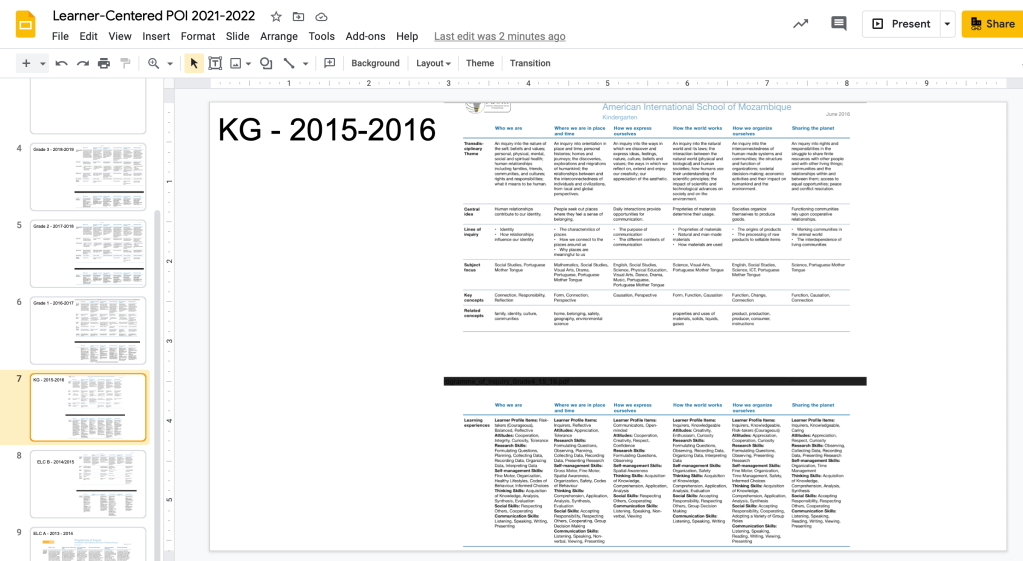
At the end of this academic year, we can update the units they explored in Grade 4
Then next year’s Grade 5 teachers can easily see what units their incoming learners have explored over time, to help inform the planning and decisions they make for their written curriculum throughout the year.
I am also considering an “over time” articulation slide, where the Grade 5 teachers – for example – can easily tally things like key concepts, ATL skills, attributes of the Learner Profile for that specific cohort, which again can inform their planning for this group of learners.
Perhaps even a colour-coded running record of parts of each TD theme descriptor…
As a I mentioned, these ideas are half-baked at best! But I’m definitely itching to take some risks and reimagine our school’s approach to building, capturing and balancing our PYP Program of Inquiry.
I would love to hear your thoughts and feedback to help me further reflect upon, refine and fertilize these idea seedlings.
